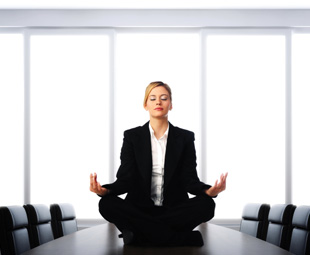The resilience-building toolkit

Humans have always used tools to help them achieve certain tasks. In this, the fourth in his series of articles designed to help you practice safe stress, RICHARD HAWKEY gives you the tools to build resilience to stress.
Resilience is the ability to withstand and then “bounce back” from external pressures or stimuli (read: “stress”). If you’ve taken the Vitals survey mentioned previously (see box), you will have met the jelly babies – the coloured figures that summarise your current stress status.
Each figure is surrounded by a circle of varying thickness – think of this as a “force field”. The thicker the force field, the greater your resilience and ability to rise to meet life’s challenges. The opposite is also true; if your force field is damaged, even a relatively weakly thrown curve ball can sneak through and knock you out.
Toolkit time!
Most good toolkits contain a variety of tools for a variety of jobs – forgive the DIY analogy, but I am a hapless yet enthusiastic handyman. Similarly, building resilience is best approached with a fistful of tactics. So put on your safety goggles, don your hardhat and let’s open the lid and take a quick peek inside.
Sleep
This is an active bodily function and is as important as eating well or going to the lavatory (you know how you feel when you don’t do either of those properly!). Sleep is the body’s natural repair cycle and is one of those areas where quantity and quality are needed. Most experts recommend between six and eight hours per night for adults.
In addition, take note of the following:
• Enjoy a maximum two cups of tea/coffee per day.
• Cut out caffeine six to eight hours before going to bed.
• The bedroom is for sleep and sex. Get rid of the TV and stop working on that sales report in bed.
Diet
What you put in is what you get out. We all know this, but are possibly scared of having to go to the extremes most diets suggest. I need to make it clear: I am not a dietician and any radical changes to diet or exercise levels should be done under professional medical guidance. However, if you are reading this, you have at least a modicum of intelligence and hopefully some common sense. Eat a little bit of absolutely whatever you like occasionally, just not all the time.
In addition:
• Eat more low GI foods.
• Chew your food thoroughly and slowly; this aids digestion and you eat less.
• Drink more water. Yes, really.
Exercise
This helps our bodies “mop up” many of the so-called stress hormones and also releases others that make us feel good. It helps aerate our blood, burn fat and generally improve self-esteem. One of life’s great paradoxes is that the more exercise you do (within reason) the more sustainable energy you will enjoy.
• Do activities you enjoy; walk the dog, dance, garden.
• Exercise little and often; try and raise your heart rate and get a little sweaty three to four times per week.
Relationships
At our core, we are emotional creatures and need the interaction of others to make us complete – hence the cliché “no man is an island”. Importantly, we need to have a good relationship with ourselves before we can have similarly meaningful ones with others. The power of connecting with another human being is immense and we need to take the time and energy to invest in our relationships.
• Treat yourself with respect; engage in positive self-talk.
• Do one random act of kindness every day; what you put out, comes back.
Me time
This is all about doing things for yourself just because they feel good for you. We accept the concepts of investing in our education, financial wellbeing, the “stuff” that clutters our homes; but how many of us really invest in ourselves?  We often abandon the joyful pursuits we engaged in as children and young adults – why? Because they won’t earn us any money? Look back to your childhood and take some cues from there; as long as it isn’t illegal or immoral, go for it!
We often abandon the joyful pursuits we engaged in as children and young adults – why? Because they won’t earn us any money? Look back to your childhood and take some cues from there; as long as it isn’t illegal or immoral, go for it!
Tip:
• To engage in guilt-free “me time”, make time for your family members and friends to do their own thing too.
You can’t fix everything with a hammer – as tempting as it may be to try! Similarly, pounding away at the gym while starving yourself of sleep is not only unbalanced, but actually dangerous. Remember: balance and moderation in all things. Slowly and steadily build up your resilience – after all, your life is a marathon, not a sprint.
In the next column we will expand on the concept of time and energy management before we delve deeper into the toolbox – you need to
make space in your life cupboard so the toolbox doesn’t get lost
and forgotten.
FREE Personal Stress Assessment
Don’t forget to take your confidential stress self-awareness survey – compiled by several doctors and business executives. Go to www.vitalstest.com and enter sheq759 as the “employer code” & follow the simple on-screen instructions. Towards the end of this series of articles we will bring you the aggregated results; but don’t worry, your confidentiality is assured – your answers will be known only to yourself.
Richard Hawkey, author of Life Less Lived and founder of equilibriumsolutions, spent many years pounding the corporate treadmill until literally falling off; diagnosed with burnout and clinical depression. Now, Hawkey has combined his general management and leadership experience with lessons learnt from mismanaging stress, to become a self-styled anti-stress evangelist. He specialises in identifying stress in oneself and others; the personal and professional impacts; and how one can break out of the negative spiral and emerge vigorous and vital to realise quantifiable benefits.


